#Te Whānau-ā-Apanui
Note
PoC and queer people, and queers of color are not out here being mad at everyone for no reason. Did you guys think it was just a group of cishet white men who probably don’t even watch the show? We have begged all these years for aid, but it’s dystopian-like to see you guys come together and pay over $21 thousand for a billboard within a few hours. The “charities” aren’t listed, and even then seeing fans tell the organizers use all the money for advertisements is horrifying to say the least. Even more so adding on the creator is a Zionist and antiBlack, which again White people arent gonna give a shit about as they continue to show so in all fandoms. It’s the people affected that calls this guy out, and y’all don’t listen. Do what you want, but stop diminishing our voices as the “angry crowd” have some damn compassion
CW: Racism, Anti-Semitism, Zionism, This is a save space ship so please do not read if you don't have the spoons because there's heavy shit in here today.
------
Hi friend! First of all, I want to say thank you so much for reaching out and giving me some more information! Personally, I don't think what you're being mad about is "for no reason". For me, that's not where the issue lies, and perhaps you could provide me with some further insight. So far, the only kinds of responses to this campaign that I've encountered that are negative have been "Taika is a Zionist", and I have not encountered that "queers of color " we're having a problem. Now, that could be that I just haven't seen them and now that my reach is out a little further it's coming up-- which is great, I want to have a conversation about it. I am newer to the fandom so it's possible I just haven't been around for a lot of this in the past, I admit that.
I would be more than happy to hear more about what it is that "Queers of Color" have a problem with regarding the show.
------
In regards to "Even more so adding on the creator (I'm assuming you're referring to Taika here as opposed to David Jenkins?) is a Zionist and antiBlack, which again White people arent gonna give a shit about as they continue to show so in all fandoms."
So, I can see why you feel that way. I've heard a lot from many people of color who feel as if they aren't being considered in a lot of fandoms (not specifically this one but general scifi , fantasy, etc). I am white, so I know that no matter what my background is culturally, I cannot understand the full extent of what our friends of color go through so I try to amplify the voices of those people when they bring information to the table. I do think this fandom cares, and would love to hear more if you're willing to provide it.
My First Question is, where is the narrative coming from that Taika is AntiBlack? He's of Te Whānau-ā-Apanui, an indigenous person, with jewish heritage. I did some googling (yes I realise that's not the most efficient or accurate tool, but I did try to find independant sources). The thing that sticks out most to me is regarding the 2020 following the death of George Floyd. Here is one of the articles I referenced:
Taika's tweet was "Watch the whole thing. Eloquent. Clear. Everyone is angry but there is a way to direct that anger." in response to Killer Mike's message asking “not burn your own house down” and instead “fortify your own house.” and to "Plot, plan, strategize, and organize" as he said in the video.
Now, I see a lot of reactions from people of color specifically stating "don't police my anger" and that is a 100% valid take. No one should be telling you how to channel your anger when as a society you are being murdered and you have to fight back to survive. I do think that everyone still has a lot to learn.
I am going to give you a little background on myself (not to toot my own horn, but to provide a little perspective on how much we are still learning). I am whiteyest white person there is, like I go outside and my skin practically lights on fire from my irish/eastern european ancestry, but I also have a black biological grandmother from Guayana who had ancestry back to many years before when slaves were brought over during the Atlantic Slave Trade. So growing up, even though I was white, I thought I had it all figured out on racism because my grandma was black. The narratives taught in US schools were that "racism was in the past" because schools had been white washed, and I grew up in Northern Virginia, where it was supposed to be "multicultural center of the country" since we were so close to DC.
Over time, I started finding out from friends of color and indigenous friends that they were still experiencing racism towards them. I never knew, because I wouldn't have, it wasn't faced towards me. And I knew some-- but I didn't know enough even then 15 years ago.
Roll around to 2010-12ish, several things occurred that made "black face" become more prominent and I had more discussions with my friends about what kind of racism they dealt with in their day to day lives. I used to color my arms when I was a kid with a brown marker because I wanted to look like my grandma. I found out at the ripe old age of 24 that was basically black face for a lot of people and that it wasn't ok.
2020 came, and George Floyd, and Brianna Taylor, Stephan Clark, Botham Jean, Freddie Gray and so many others were murdered by police and white supremacist shitwads, and suddenly, not just me but so many more white people started to get the slightest inkling of just HOW BAD it really was for black people in this country. That was the year honestly I started to question the systems of our government, and all the racial inequalities that I THOUGHT I had understood before.
Our government, our society culturally has tried its best to sweep racial inequality under the rug, and pretend like "racism is gone" when we still have systems built on racism, that benefit from racist systems of the past. (This is why it's so important that we keep fighting against people who want to white wash history books in a lot of the southern states like FL and TX) Is that an excuse? Of course not. But I believe in change whole-heartedly, and while I am still ashamed of the vast ignorance I had for so many years, and worry about the ignorance I still don't know I'm ignorant of, I do try to be better. I am trying to take that shame and continue to learn and chip away at my ignorance not only through others but on my own. I am not asking for you to pity, or to forgive me or any other white person for that kind of ignorance, what I'm doing here is trying to make a safe space to share and so you can see that people can actively change. Is it enough? Probably not, but it's a start.
-- Now, All that to say, regarding Taika... that tweet from 2020, as I said, quite a lot of people (of all colors) had their eyes opened that year to some pretty systemic racist horrors, and if that is the tweet that sparked the idea that Taika is "Anti-Black" I think, while you don't have to forgive him, it would be something to consider that quite a lot of people were well intending during that time but did not fully comprehend exactly how bad it was. I would however, if you'd be willing to chat with me in DMs about it, or send another ask, like to hear more if there was more evidence of it somewhere I didn't see.
--------
In regards to Taika being a Zionist... which I have heard from others quoting the letter he signed asking for the release of hostages in Gaza. I'm including a link to a copy of the letter just so people can read it, I realize the hollywood reporter isn't an amazing source, but it has the letter included, so thats why. Once again, when that letter came out back in October, quite a lot of people didn't actually know what was going on in Gaza.
We all heard brief things in our day to day news feed, but just like how everything is on the internet right now, information isn't "complete" it's broken up in fragments and it takes a really long time to compile them. There is misinformation galore, and it's incredibly easy to not hear the entire story. I know in October, I was dealing with health issues and I was completely just not paying attention what was going on (we all have our lives and as much as I'd like to say we can all be omniscient and fully present for all things it's truly not a reasonable expectation of any human being nor should it be, the world is a very large place, and we should help where we can but there's a limitation on human ability).
In my opinion, as someone who has tried a lot of their life to "do the right thing" and made a lot of mistakes and tried to learn from them, that letter, and Taika signing it seemed like a "Good intentions" situation again, hoping that he could help in someway. Am I making excuses for him? No, I'm expressing my perspective. I'm not here to change your opinion on him, I'm here to express why fans are still fighting for this show. Do you have other resources regarding his support of zionism?
What concerns me though as a whole, is people throwing 'Zionist' around very liberally these days. I am not an expert on the situation and I don't claim to be. However, growing up in DC when 9/11 happened, I can tell you that labels like that can get dangerous very VERY quickly. Muslim families I grew up with had their windows shattered with bricks on the night of 9/11 (and labeled terrorists) despite being pillars in the community and never having hurt a soul.
Right now, Zionist is a word that is being used to label someone in a very intense way, and it invokes dangerous responses in people. I do believe we really need to make sure we are labeling these situations properly because those kinds of labels CAN and WILL get out of hand very quickly and get people hurt.
I'm going to link to this article from the Anne Frank house to define Zionism. I am also going to list this article from the American Jewish Committee regarding racism and anti-semitism. Once again I'm not an expert on the situation going on in Gaza, and I'm happy to hear more regarding it.
-----------
In regards to your comments on the charities:
There are some charities listed in a few places, they just aren't all part of the advertising campaign one:
The main one for Rainbow Youth is here:
The Renew As a Crew Fundraiser (not the advertising one)
https://ry-community.raisely.com/renewasacrew/
**The Advertising Campaign / Charities**
You mentioned in your ask "even then seeing fans tell the organisers use all the money for advertisements is horrifying to say the least".
I can understand why that would be horrifying to someone who is feeling raw the way that you are. It's completely valid. I would like to offer up the perspective that some people are very invested in this show for their own reasons (some people have never felt represented in major networks) and they too are allowed to feel excited and say things that might be in their own best interest. We are all allowed those opinions, and I think the more we shame people for wanting something, the less discussion we're going to be able to have.
That said, I think the @renewasacrew leadership team made a good decision to stick to their original $10K for advertising, and the rest going to charity because of the confusion. It does the most good, and still allows the original intent -- to show the world how much Our Flag Means Death means to many people.

In regards to which charities they are going to -- I had seen somewhere that they were going to a charity Samba and Vico Ortiz had chosen but I asked the leadership team on twitter and this is what they responded with (which I think is fair, they're trying to take their time to make a good decision with the help of everyone involved).

-------------------
I would also like to point out however, that we do have the ability to care about more than one thing at once. One thing that makes life worth living is the little things that make us smile. I have a lot of stuff at home that makes life rough, and my escape is this gay pirate show, and this beautiful, compassionate community that supports it.
We are allowed to have things that we love as well as the things we fight for. I do a lot of my activism on facebook and in person, I don't bring it to tumblr much because this is the safe space for a lot of people to dream and have dreams. It is important for everyone's mental health to step away from the realities of life sometimes (which I know some people like those in Gaza or Ukraine can't do) or else we all burn out and can't help anymore.
I hope this helps a bit in showing you we do care about queers of color, and we do want to know more how we can help, and we are willing to listen. There's a lot of compassion in this community, and I think a lot of people would be willing to talk about it if things are done in a safe space. I do apologize that you feel like we've "diminished" your voices, that was not the intention. If you would like to use that voice to provide more examples and your views I'm happy to listen. I do think we need to allow people to enjoy things too though, because life's not worth living otherwise. Nothing is perfect, but we continue to try and improve.
I would also like to recommend that if the OFMD fandom renewal campaign is bothering folks, please feel free to block us. We don't want to make anyone feel bad, but we also want to express ourselves in a healthy manner. Much love your way Anon.
50 notes
·
View notes
Note
ok about your tags on that post about blue and how the color blue is used in boy…… the haka at the end is all blue!!
i hesitated to apply the same color symbolism to the thriller haka as the rest of the movie because it doesn't exist diegetically within the plot; no one in the thriller haka is in character except for taika/alamein. on the other hand, it is visually reminiscent of boy's fantasies:

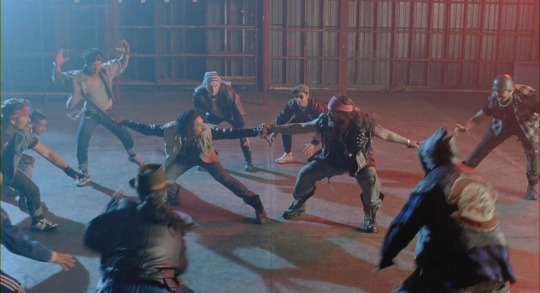

i do think the use of blue is significant here. it's a very hopeful, lighthearted ending to the film after alamein comes back and faces his grief (which could be tied to him wearing red here, aside from it obviously also being michael jackson's outfit from the thriller music video), but i think it's also a bit bigger than that.
the haka at the end works as punctuation to the film; it adds importance and intent to what the film was trying to say because māori culture obligates people to follow up an important speech or statement with a song. he's saying something with boy, and the syncretic haka signals this. the addition of carvings and the arch behind them serves to further illuminate the inherent māori-ness of the film.
so surrounding this energetic, excited, fun, indisputably māori ending to his film with blue, with the color constructed to be associated with hope, is super powerful! it's no longer emphasizing the characters' hope, but the hope of the actual people who made the film what it was. and those people were, by and large, part of taika's iwi, te whānau-ā-apanui! boy was taika's, but it was also a community project and a beautiful incorporation of the community into the film.

#i went on a tangent SORRY thank you for pointing this out i hadn't thought about it before#gonna go cry about this now tho i love the thriller haka so much#boy (2010)#boy (2010) discussion group#taika waititi#cricket answers
87 notes
·
View notes
Text
Principal Photography Underway on Feature Film 'One Winter' with Julian Dennison, Minnie Driver and Rhys Darby

Principal photography is underway on the new feature film ‘One Winter’ starring Julian Dennison of Ngāi Takoto (Hunt for the Wilderpeople, Godzilla v Kong), Minnie Driver (Circle of Friends, Good Will Hunting), Rhys Darby (Yes Man, Flight of the Conchords), James Rolleston of Ngāi Te Rangi, Te Arawa, Ngāti Porou, Whakatōhea (Boy, Pork Pie) and Erana James of Ngāti Whātua Ōrākei and Waikato Tainui (The Changeover, The Wilds).
Written by Hamish Bennett (Te Arawa, Patuharakeke, Ngāi Tahu) and Sonia Whiteman, and directed by Paul Middleditch and Hamish Bennett, this coming of age story is set in Aotearoa New Zealand in 1981 when the arrival of the South African rugby team sets off nationwide protests against apartheid and racism. Dennison plays Josh Waaka, a 17-year-old who after being a passive bystander all of his life, is suddenly forced to stand up for himself, his family and his future.
“One Winter is a story of hope, courage and standing up for what one believes is right,” says directors Middleditch and Bennett. “It has been incredible to have such a stellar cast join us for this project and we have been blown away with what they have brought to the story.”
One Winter is currently shooting across Tāmaki Makaurau Auckland and Ōtepoti Dunedin by a wealth of incredible local creatives and crew. Ensuring production takes place in the stories home of Ōtepoti Dunedin is integral to the project with consultation with mana whenua from the runaka/tribal councils of Puketeraki and Ōtākou continuing to be a key part of the filmmaking process for Producers and Directors.
The film is produced by Emma Slade, Sandra Kailahi and Angela Cudd (Ngāti Porou, Te-Whānau-Ā-Apanui, Ngāti Wai). Troy Lum is executive producer. Stacey Morrison (Ngāi Tahu, Te Arawa) has supported the film with iwi engagement as well as offering cultural guidance, however the key creative content that emerges from the partnership with the runaka of Ōtepoti is very much from those on the ground in that takiwā/district.
One Winter was made with investment from Te Tumu Whakaata Taonga New Zealand Film Commission, the New Zealand Government’s Screen Production Grant, with financing from Kiwibank. Blue Fox Entertainment are the international sales agents with Kismet distributing the film across Australia and New Zealand.
Source: New Zealand Film Commission
35 notes
·
View notes
Text
A List Of Known Māori Voice Actors that Star Wars could've hired for the clones instead of whitewashing them.(Please feel free to add more)
Jemaine Atea Mahana Clement. - Ngāti Kahungunu through his mother.
Daniel Logan. - Of Māori descent. Best known for his portrayal of Boba Fett from the 2002 film Star Wars: Episode II – Attack of the Clones & voiced Fett in the animated series Star Wars: The Clone Wars.
Temuera Derek Morrison (MNZM). - Te Arawa (Ngāti Whakaue) and Tainui (Ngāti Maniapoto, Ngāti Rarua) whakapapa. For those unfamiliar, whakapapa means genealogy. East Coast elder, Apirana Ngata, explained that whakapapa is ‘the process of laying one thing upon another. If you visualise the foundation ancestors as the first generation, the next and succeeding ancestors are placed on them in ordered layers. Played the role of Jango Fett in the 2002 film Attack of the Clones, provided the voice of Boba Fett in the re-release of The Empire Strikes Back, portrayed Boba fully in the second season of The Mandalorian and in the show The Book of Boba Fett.
Taika David Cohen (ONZM), also know as Taika Waititi. - Describes himself as a "Polynesian Jew". His mother's family were Russian Jews & His father was of Te Whānau-ā-Apanui descent.
Piripi Taylor. -Ngāti Awa, Tūwharetoa, Te Arawa.
#star wars#clone wars#star wars tcw#star wars rebels#star wars the bad batch#star wars tbb#unwhitewashtbb#racism#whitewashing#māori#clones#the bad batch#psa i am not māori nor polynesian.#psa this was literally a ten minute google search for all the information at most to compile this post#psa these are only the most popular voice actors who are CONFIRMED as Māori#there will be many more and there is no excuse for disney to not hire#if they have experience playing or voice acting within star wars that has been included.#anti filoni#meta#i don't know if anyone has done this before - if they have please tell me so I can reblog their post too
27 notes
·
View notes
Text
I was especially interested to read that they have different types of animals speaking with different mita or regional dialects - so the lions speak Tainui dialect because of Tainui’s association with Kīngitanga, the Māori King movement, the hyaenas are Ngāti Kahungunu, Rafiki is Tūhoe and Timon and Pumbaa sound like they’re from Te Tai Tokerau. (They’re looking at featuring Ngāi Tahu, from the South Island, in the dub of Frozen which is the next project, and Moana mostly featured Te Whānau-ā-Apanui and Ngāti Porou dialogue.)
I have a lot of problems with the ways Disney operates as a business entity, and with their weakness in matters of queer representation to date, so I’m not just blanket praising them, but I do think it’s pretty cool that they are working with Matewa on projects like this. I don’t know if one would follow from the other, but wouldn’t it be great fun if they eventually made an Aotearoa-set animated movie, developed from the outset as a bilingual production showcasing Māori talent?
29 notes
·
View notes
Text
Taika Waititi
‘Taika Waititi (sometimes credited as Taika Cohen) is of Te-Whānau-ā-Apanui descent, and hails from the Raukokore region of the East Coast. He grew up on the East Coast and in Wellington, the son of a school teacher and an artist. Ambitions to be a painter or deep sea diver were sidelined after a high school drama teacher opened his eyes to acting.
Waititi graduated from Victoria University in 1996, with a degree in Theatre and Film. In 2000 he was nominated for an NZ Film Award for Best Actor, after playing a lothario student in hit black comedy Scarfies. Intrigued by the idea of working on a road movie, he played a modern day hippy in Snakeskin — director Gillian Ashurst praised his "presence and style" — and one of the strippers in TV's The Strip.
A genuine renaissance man, Waititi has also won acclaim for his painting, photography, design and stand-up comedy.’
https://www.nzonscreen.com/profile/taika-waititi/biography
‘Taika David Waititi also known as Taika Cohen was born on August 16, 1975. He is of Maori (from his father’s side), and Jewish (from his mother’s side) descent. Taika was born and raised in Te-Whānau-a-Apanui (the East Coast region) and also in Wellington, New Zealand.
As a performer, comedian, visual artist, and director, Taika has been a strong and driving force throughout New Zealand for a few years.
He was a part of five-men comedian group, So You’re a Man, while going to Victoria University of Wellington. He also formed a comedy duo called Humorbeasts with Jemaine Clement who was a part So You’re a Man.’
‘As a visual artist, Taika spent two years in Berlin working and exhibiting and several years experimenting with photography and painting. Taika was one of five inaugural recipients of the Arts Foundation’s New Generation Award in 2006.
Taika is, to his international fans, an unstoppable rising star who doesn’t limit himself from creating any artistic form or genre which inspires millions of people around the world.’
https://worldoftaika.com/taika-waititi/
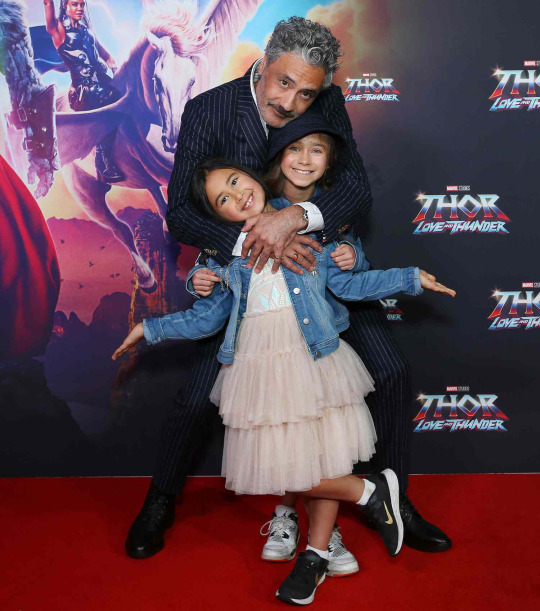
Stylistically, Taika Waititi's films are eclectic and extravagant. He likes to blend genres, engage with unusual color palettes, and his soundtracks are often extremely well-thought-out.
https://whatnerd.com/magic-taika-waititi-what-makes-him-different-hollywood/
0 notes
Text
Title: Te Punga O Nuku-tai-memeha
Medium: Acrylic, MDF
Artist: Tamararo Raihania
Iwi: Ngāti Porou, Te Whānau-ā-Apanui
Size: 1200mm x 600mm
Price: $2,500
#Te Punga O Nuku-tai-memeha#Tutahi#digital design#tutahi creatives#design#technology#business#developers & startups#professional artists#arts#designers residing in queenstown#artists and designers residing in queenstown
0 notes
Photo

Taika Waititi as Black Beard
Ethnicity: Russian, Jewish, Maori(Te Whānau-ā-Apanui), French Canadian, Irish etc.
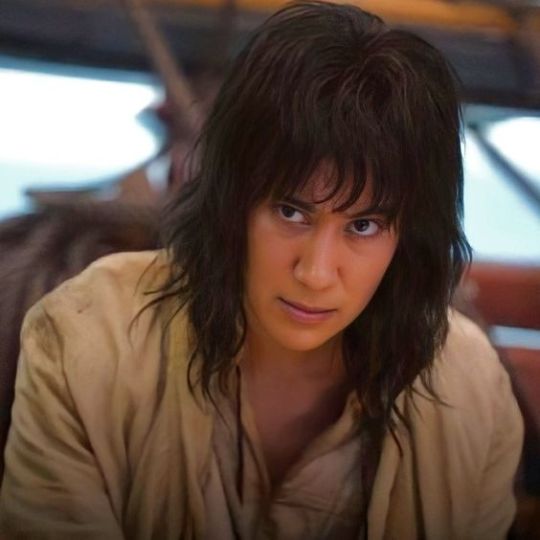
Vico Ortiz as Jim
Ethnicity: Puerto Rican

Samson Kayo as Oluwande

Joel Fry as Frenchie

Samba Shutte as Roach
Ethnicity: Dutch, Mauritian
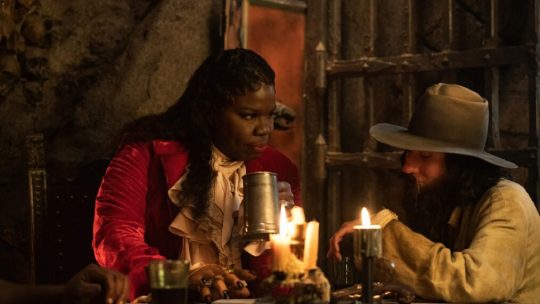
Leslie Jones as Spanish Jackie
Ethnicity: African American

Guz Khan as Ivan
Ethnicity: Pakistani, Punjabi
David Fane as Fang
Ethnicity: Samoan
1 note
·
View note
Text
Strategic Senior Advisor (Fixed Term) - Department of Conservation - Ruatoria, Whakatāne or Ōpōtiki
Strategic Senior Advisor (Fixed Term) – Department of Conservation – Ruatoria, Whakatāne or Ōpōtiki
Supporting the restoration of Raukūmara Pae Maunga
Full-time Fixed Term 2 years
Te Whānau-ā-Apanui or Ngati Porou based opportunity
Raukūmara Pae Maunga is a large-scale restoration project that aims to significantly reduce possums, rats, stoats, deer and goat from a 90,000-hectare territory of Public Conservation Land spanning the northern to central Raukūmara ranges. Additional to this area…

View On WordPress
0 notes
Photo

Buffy Sainte-Marie (Piapot Cree) Oscar win, 1983

HAMMOND PEEK (Ngāi Tahu/Te Āti Awa Māori) Oscar wins: 2003, 2005
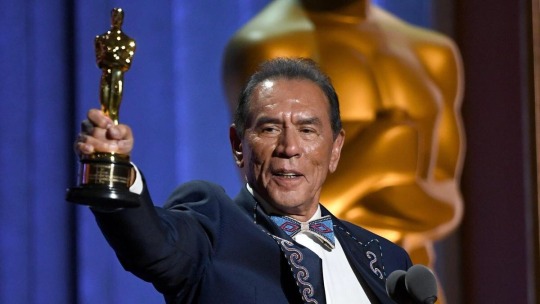
Wesley “Wes” Studi (Cherokee), Oscars, 2019 and 2020

Yalitza Aparicio (Mixtec/Trique) Oscar win, 2020
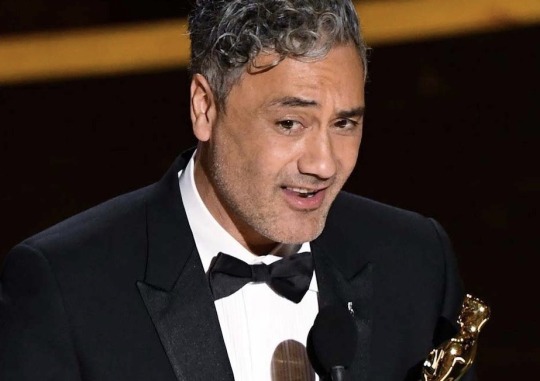
Taika Waititi (Te Whānau-ā-Apanui Māori) Oscar win, 2020
“I dedicate this to all the indigenous kids in the world who want to do art and dance and write stories; we are the original storytellers and we can make it here, as well.”
–Taika Waititi, winner of Best Adapted Screenplay, 91st Annual Academy Awards, 2020
#Indigenous Oscar Winners#Buffy Sainte-Marie#Cree#Hammond Peek#Ngāi Tahu/Te Āti Awa Māori#Wes Studi#Cherokee#Yalitza Aparicio#Mixtec#Trique#Taika Waititi#Te Whānau-ā-Apanui#Māori#Indigenous#First Nation#Indigenous Americas#Indigenous New Zealand#Native Pride#Indigenous Pride#Oscars#Indigenous Artists#91st Academy Awards#Oscars 2020
739 notes
·
View notes
Photo
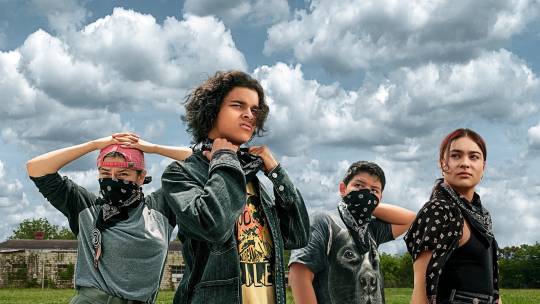
Reservation Roots.
For Indigenous People’s Day 2021, Leo Koziol explores the indie-film roots of Sterlin Harjo and Taika Waititi’s hit native series, Reservation Dogs.
Breakout FX on Hulu hit Reservation Dogs speaks directly to native audiences, each episode made lovingly by a bevy of native directors, actors and crew, many of whom found their storytelling voices through independent film. Anyone new to native cinema could do no better than to start their journey with a few choice cuts from these native talents.
The indie-film factor in Reservation Dogs’ success cannot be overstated. Television has a reach that other media do not, yet the path to primetime has never been easy. Any television project can die in development, fall at the pilot stage, or fail to be renewed after one measly season. For underrepresented storytellers, this road is even rougher.
To arrive on the small screen with a fully formed voice, there needs to have been a place to warm that voice up, and it’s more often been in the world of independent film that these opportunities lie for Indigenous artists.
Reservation Dogs is the brainchild of Taika Waititi (Te Whānau-ā-Apanui, Aotearoa) and Sterlin Harjo (Seminole/Muscogee Creek), who were both supported as indie darlings at Sundance under the watchful eye of recently retired native program director Bird Runningwater. (He has left the storied institute in order to produce his own projects.)
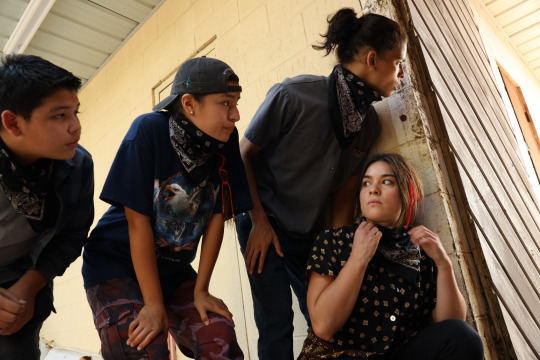
Lane Factor as Cheese, Paulina Alexis as Willie Jack, D’Pharaoh Woon-A-Tai as Bear, Devery Jacobs as Elora Danan Postoak in TV series ‘Reservation Dogs’.
Episodes were also directed by veteran natives Blackhorse Lowe (Navajo Nation) and Sydney Freeland, as well as performance poet and Bishop Paiute Tribe citizen Tazbah Rose Chavez (from the Nüümü, Diné and San Carlos Apache).
Between them, these five have made fifteen feature films (and won an Oscar), which represent a wellspring of native cinema ripe for rewatching or—going by many recent Letterboxd reviews who have come to them via Reservation Dogs—first-time discovery.
For aficionados of native cinema, Reservation Dogs is full of uniquely native humor (greasy fry bread, anyone?) and pop-culture references (main character Elora is named for the baby in Willow), but the most fun aspect for me has been the in-jokes. The Skux Soda cabinet at the native clinic (Hunt for the Wilderpeople fan service), a row of Māori dolls in a native rez store (co-creator Waititi is Māori) and, best of all, in episode five, an Oklahoma cinema marquee listing films by the four Native American directors of the series: Barking Water (Harjo), Drunktown’s Finest (Freeland), Fukry (Lowe) and Your Name Isn’t English (Chavez).
Waititi, the starrier of the two creators, whose feature works range from the awkward romance of Eagle vs Shark through to next year’s Thor: Love and Thunder, has certainly injected a careful balance of humor and emotion into the series. From his filmography, Reservation Dogs most resembles his 2010 semi-autobiographical comedy, Boy. But at heart, it is Harjo’s show—set in his home community of Oklahoma, and the culmination of fifteen years of filmmaking that serve as a calling card to its themes.
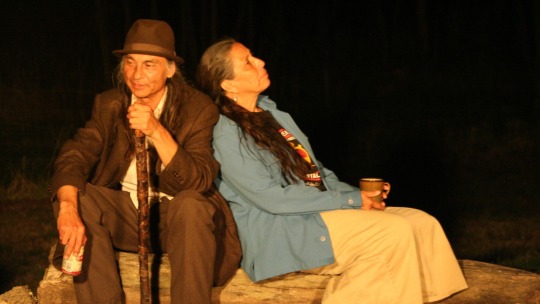
Richard Ray Whitman and Casey Camp-Horinek as Frankie and Irene in Sterlin Harjo’s ‘Barking Water’.
Stretching back to his beginnings, you can see two of Harjo’s best shorts on his YouTube channel. Goodnight Irene mirrors episode two of the series with malaise and humor in a native clinic; Three Little Boys directly mirrors the “kids on the Rez” ensemble of the show.
Then, in a trio of dramatic features, we see the progression as Harjo’s filmmaking skills grow alongside better budgets and resources. Letterboxd members are proudly noting the thematic similarities in his works. “Like Reservation Dogs, Harjo finds his most striking emotional moments in the quiet spaces between friends and family members,” writes Hannibal Montana of the first, Four Sheets To The Wind (2007).
CoterEB notes that Harjo’s 2009 follow-up, Barking Water, slots neatly into the Reservation Dogs storytelling family: “What Harjo absolutely succeeds at is letting the audience go along with it… It’s emotionally effective without manipulation.” It’s an approach that is further on display in his third feature, Mekko (2015), Hannibal Montana again recognizing that “much like Reservation Dogs, Mekko has one foot in a nostalgia for a lost, proud past and another in the immediate issues facing Indigenous people today, namely poverty, violence, and addiction”. (Hanabi Banana gives a more pointed review of this film, which I loved. Spoiler alert!)
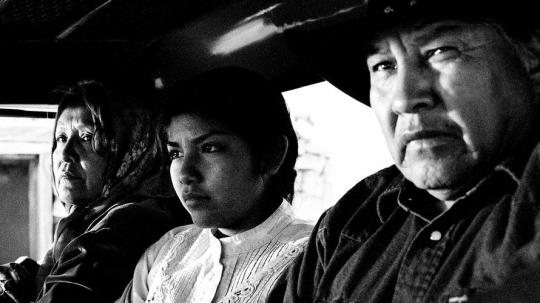
A still from Blackhorse Lowe’s 2009 short, ‘Shimásáni’.
Blackhorse Lowe is a long-time collaborator of Harjo’s; he was one of the editors of Mekko, and is also a Sundance alumnus. Lowe has a two-decade pedigree across many filmmaking departments and is a champion of genre-driven Indigenous films in New Mexico. His 2009 short Shimásáni is currently available on MUBI. He’s made three features, my favorite of which is Chasing The Light.
Writing about the 2014 film, Andy Nelson observes: “Lowe, also the cinematographer, captured some beautiful and haunting black-and-white imagery, which certainly helps add to the other world wanderings. It’s worth checking out, but the grittiness and raw drug comedy elements may be too much for a lot of people.”
I’m a huge fan of Lowe’s fellow Navajo director Sydney Freeland. You can watch her 2017 second feature, Deidra & Laney Rob A Train, on Netflix, but for me her best work to date is her first, Drunktown’s Finest (2014). Leonara Ann Mint writes of Freeland’s debut: “a very nuanced and powerful experience. Native American and trans voices are both way too rare in cinema, so to get both in the same film is often a revelation. All three plot lines here have depth, warmth and nuance, and by the end, the film had achieved a deep sense of emotional connectedness with each character that I won’t soon forget.”
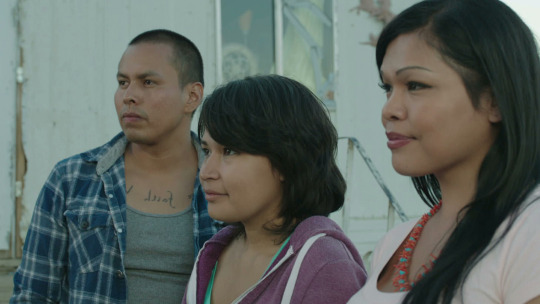
Jeremiah Bitsui, MorningStar Angeline and Carmen Moore in Sydney Freeland’s ‘Drunktown’s Finest’ (2014).
When Drunktown’s Finest was released, Freeland had not yet come out as a trans person (one of three stories in the Navajo-set film is of a trans woman, and how Navajo culture traditionally accepted those of a “third gender”). She’s gone on to cut a path in both LGBTQ storytelling and Indigenous film, and it’s wonderful to see her on the team for Reservation Dogs. Freeland is also directing episodes of Peacock’s Rutherford Falls, which shares creative talent with the Reservation Dogs collective. And with Harjo, she is making Rez Ball, a sports film for Netflix about the unique culture of Indigenous basketball.
In front of the camera, the ensemble cast of Reservation Dogs carries a film pedigree as deep as the directors behind it, and while many of the films they have appeared in are made by non-native writers and directors, their performances—and, in many ways their experiences on those sets—inform their work on Reservation Dogs.
Kahnawà:ke Mohawk actress Kawennáhere Devery Jacobs (credited as Devery Jacobs for her role as Elora) has played significant roles in Rhymes for Young Ghouls, the zombie outbreak gore-fest Blood Quantum and the Neil Gaiman series American Gods, as well as a number of short films, including Ara Marumaru for the Māoriland Film Festival Native Slam.
Dallas Goldtooth, who is Dakota and Dińe, appears on screen as the spirit of a warrior who died at Custer’s last stand. Goldtooth can also be seen as Rich Hall’s traveling companion in the comedian’s 2012 documentary re-examination of Native American stereotypes. Bear is played by Canadian actor D’Pharaoh Woon-A-Tai (of Oji-Cree, Anishinaabe and Guyanese descent) who has a breakout feature role in this year’s Beans, by Mohawk director Tracey Deer.
The cast also includes several veterans of the native film scene. First Nation media pioneer Gary Farmer, of the Cayuga Nation and Wolf Clan, has appeared in more than 50 films, including First Cow, Dead Man and Blood Quantum, and has been nominated three times for an Independent Spirit Acting Award.
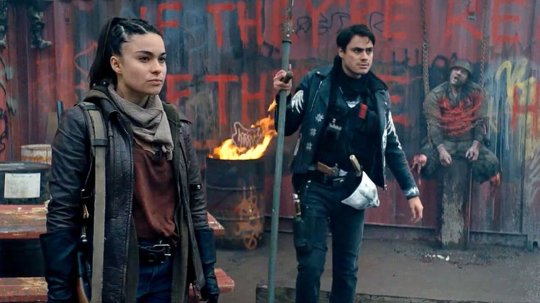
Devery Jacobs and Kiowa Gordon in ‘Blood Quantum’ (2019).
The legendary Cherokee star Wes Studi, who won an honorary Oscar at the 2019 Academy Awards, has had roles in numerous Hollywood blockbusters, including Dances With Wolves, The Last of the Mohicans and Avatar. My favorite Studi film is the comedy short, Ronnie BoDean, which you can watch for free on director Stephen Paul Judd’s Vimeo.
Nothing gets made without a script, and the brains in the Reservation Dogs writers’ room also have considerable roots in independent arts. Many of the crew, including Harjo and Goldtooth, are members of the 1491s, an Oklahoma-based native sketch comedy group. The 1491s are most famed for the 2019 Oregon Shakespeare Festival, where they premiered Between Two Knees, an intergenerational comedic love story/musical set against the backdrop of true events in native history.
1491s with writing credits on the show are poet and podcaster Tommy Pico (from the Viejas reservation of the Kumeyaay nation), Bobby Wilson (Sisseton-Wahpeton Dakota), who plays Marcus Werewolf in the What We Do in the Shadows television spinoff, and Migizi Pensoneau (Ponca/Ojibwe), who has several shorts on his filmography.
Right after the finale of series one, FX on Hulu announced Reservation Dogs season two and an expansion of its all-Indigenous writers’ room. Director Blackhorse Lowe joins the room, along with actors Jacobs and Goldtooth.
Other new writers in the room are Ryan RedCorn (Osage), who played Mike in Harjo’s Barking Water, Afro-Indigenous comedian and director Chad Charlie (Ahousaht First Nation), who made the 2020 short Uu?uu~tah and has another, Firecracker Bullets, coming next year, and award-winning writer-director Erica Tremblay (Seneca-Cayuga). Her 2020 short film Little Chief premiered at Sundance, and she is following in Waititi’s and Harjo’s footsteps as a Sundance Screenwriters and Directors Lab fellow.
The hope for both audiences and our industry is that Reservation Dogs won’t be a one-off. At the 2021 Emmy Awards, Harjo stood on stage and said, “We are here on television’s biggest night as creators and actors, proud to be Indigenous people working in Hollywood, representing the first people to walk upon this continent.”
Joined by his four leading actors, the group collectively stated: “Thankfully networks and streamers are now beginning to produce and develop shows created by and starring Indigenous people. It’s a good start, which can lead us to the day when telling stories from under-served communities will be the norm, not the exception. Because, like life, TV is at its best when we all have a voice.”
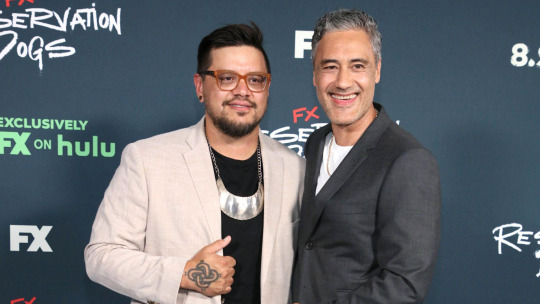
Sterlin Harjo and Taiki Waititi. / Photo by Robin Lori / INSTAR Images
As someone who for many years has followed the rise of native cinema from my home film festival, the arrival of this Stateside television hit marks a new day for native creatives. To Indigenous film fans, its creators are cult heroes who have been working for decades both in front of and behind the screen getting native American stories told, uncompromisingly.
I think about the collective talent that Sterlin and Taika have wrapped around the series, and I realize they simply contacted all their friends from past indie productions and said, hey, come work with us on this all-native production, we can pay you this time.
Related content
Leo’s list of the indie roots of Reservation Dogs
Reel Injun: a 2009 documentary by Catherine Bainbridge, Neil Diamond and Jeremiah Hayes about the Native American Hollywood experience
El Napalmo’s extensive Indigenous Cinema list
Dolores’ list of movies in which the main native character is in fact white
Beans is released in select theaters and on demand on November 5
Follow Leo on Letterboxd
#reservation dogs#taika waititi#sterlin harjo#tracey deer#beans#fx on hulu#rez dogs#leo koziol#maori movies#indigenous film#indigenous filmmaker#indigenous director#native american director#indigenous people's day
30 notes
·
View notes
Link
Taika Waititi’s Oscar win for Best Adapted Screenplay for Jojo Rabbit is a win for Jews and Māoris alike. Waititi, as you may know, is a mix of Māori and Jewish — his mother is Jewish and his dad is Māori, a part of the Te Whānau-ā-Apanui tribe. He has referred to himself as a “Polynesian Jew.”
This may seem like an uncommon mix, but actually there are plenty of mixed Māori Jews out there. I should know, as I am one of them! My mom’s heritage, on both sides, are Māori, from the Ngati Maru iwi (tribe) from the Thames area of New Zealand’s North Island. Through her father’s side, I also have Assyrian Jewish heritage.
Those of us with mixed roots may look more like a particular branch on the family tree than another, but what does a Jewish person look like, anyway? Our spirit is a mix, belonging both to New Zealand and the people of Israel. Waititi’s wit has deep Māori roots, while his Jewish heritage is evident in his social commentaries. Given that Waititi comes from two cultural groups the Nazis felt were “subhuman,” his Oscar win for writing an “anti-hate satire” — in which he portrays Adolf Hitler on screen — is the ultimate middle finger to Nazism. As Waititi himself said, “What better way to insult Hitler than having him portrayed by a Polynesian Jew?”
I couldn’t be happier about Waititi becoming the first Indigenous director to win an Academy Award. I grew up with stories of being a descendant of a Māori chief. (I suppose I am actually a Jewish princess!) It’s an integral part of my family’s oral history, and it goes like this: Back in the 1850s, the Nga Puhi, a rival tribe, supported the British colonization of other Māori by raiding tribes and taking their lands. (As a result of these attacks, they are the largest iwi left in New Zealand today.)
My family was part of the Ngati Maru tribe, which had extensive territory in Thames and a subcamp in Mangawhai. As the story goes, one evening, when the men were away from the Thames community, the Nga Puhi conducted a deadly attack on the women, children, and elderly who remained behind. Two of the chief’s daughters escaped, along with a few others, but everyone else was slaughtered. The few survivors of the attack — including my great-great-great-grandmother, Te Mapihi — trekked to Mangawhai at night, where they sought refuge.
For generations after, Te Mapihi and her surviving sister’s descendants would wake their children at night to practice “seeing in the dark,” just in case. My own mother, Te Mapihi’s great-great-granddaughter, in the safety of 1980s Australia, where I grew up, continued this tradition, in case we ever needed to flee in the middle of the night. I didn’t realize until I was older that not all children had such training, and that not every child prepared for a possible genocide.
On both sides of my mother’s family, the threat of becoming a target of violent hatred was real. This, to me, is a story that interweaves with my Jewish and Māori heritage, rather than being an odd mix. I come from two cultural groups that have endured displacement and genocides — both understand the need to stand up for themselves, and not expect Western governments to look after them.
In 1911, Te Mapihi’s daughter, Lillian Pirimona, married Joseph Francis, an Assyrian Jewish migrant from Lebanon. As the laws in Lebanon in the late 1800s made life increasingly difficult for Jews and Assyrians, Joseph, as a preteen, left Lebanon for New Zealand. His uncles were headed there in search of opportunity, and his mother asked if he could accompany them.
...For the Jews and Māori alike, each child, grandchild, and so on, is a triumph over those evildoers who deem one group more deserving of life than another. As a mom, it is important to me to continue my Māori and Jewish lines. I have two sons: One is the spitting image of Joseph Francis, and my other, although light-skinned, has very Māori features. We live in Sydney, Australia, but I’ve taken my children to New Zealand and Israel in an attempt to instill pride in their heritage. They have a strong sense of both cultures, and I feel like I’ve done my ancestors on both sides proud.
When Waititi dedicated his Oscar to all the indigenous kids out there, I felt a little teary, as if he was speaking to my boys directly. (“I dedicate this to all the indigenous kids in the world who want to do art and dance and write stories,” he said. “We are the original storytellers and we can make it here, as well.”) Being mixed race but presenting as “white,” I’ve been subject to casual racism more times than I’d care to remember. I’ve been in awkward situations when people have expressed negative stereotypes about Māori and Pacific Islanders. I generally let these people dig a large hole before saying, “Wow, that’s so interesting. Did you know two of my great grandmothers were part Māori?” The only other time I’ve seen people backpedal as fast is when they’ve shared anti-Semitic tropes with me, and I reveal that I have Jewish heritage. This happens less to me, as people expressing racist views about Māori will usually follow up with, “I thought you were Jewish or Italian or something.” As if that makes it better.
...But the more I learn about these parts of myself, the more I realize they are incredibly similar, despite the Middle East and New Zealand appearing to be worlds apart. Jews have been exiled from their homeland, with intricate diplomacy leading to them achieving statehood in Israel. Māori have been involved in a fight for land rights and compensation. Last year, I voted as a member of the Ngati Maru iwi to receive monetary compensation for programs to keep the culture alive and an apology from the government. This was a proud moment for me. Much like people question the legitimacy of Israel, I am sure there are parts of New Zealand society who don’t understand why this acknowledgment of being wronged is so essential.
Rarely do I see myself reflected anywhere in society with my ethnic mix, which makes Waititi’s win — and his moving acceptance speech — all the more special. Like Waititi, I come from survivors who have survived genocides and displacement, from warriors across the globe. All of this is entangled in the rich tapestry of my DNA — and his, too. His Oscar win is extra sweet for Māori Jewish families like mine.
336 notes
·
View notes
Text
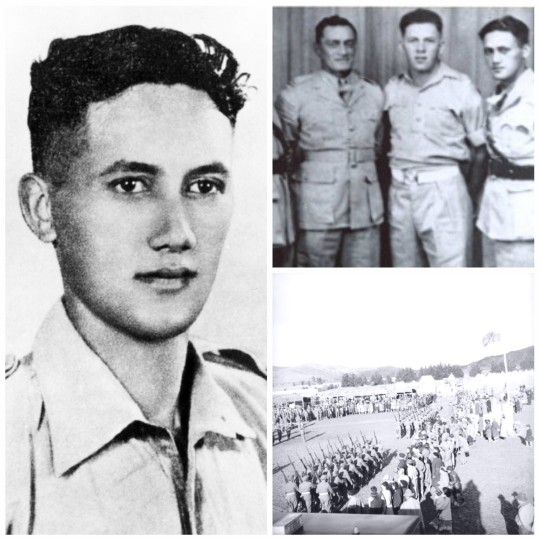
• Moana-Nui-a-Kiwa Ngarimu
Moana-Nui-a-Kiwa Ngarimu VC, was a New Zealand soldier and posthumous recipient of the Victoria Cross, the highest award for gallantry in the face of the enemy that can be awarded to British and Commonwealth forces.
A Māori of Ngāti Porou and Te Whānau-ā-Apanui descent, Moana-Nui-a-Kiwa Ngārimu was born on April 7th, 1918 in Whareponga in the East Coast region. He was one of ten children of Hāmuera Meketū Ngārimu, and his wife Maraea. The prominent tribal leader Materoa Reedy was his aunt. He was initially educated at Whareponga Native School but when the family moved to Pōhatukura, near Ruatoria, he attended Hiruhārama Native School. From 1933 to 1934, he went Te Aute College at Poukawa in Hawkes Bay, becoming well regarded at rugby. After completing his fourth form year, he worked as a shepherd on his father's sheep farm.
Following the outbreak of the Second World War, Ngarimu joined the 2nd New Zealand Expeditionary Force on February 11th, 1940, volunteering for the 28th (Māori) Battalion. The battalion, which embarked in May 1940 as part of the second echelon of the 2nd New Zealand Division was destined for the Middle East to join the first echelon, but instead was diverted to England in May 1940 where it formed part of the island's defence against a possible German invasion. The battalion eventually arrived in Egypt in March 1941. Ngarimu served through the battles of Greece and Crete after which he participated with the battalion during the North African Campaign. Commissioned in April 1942, he served for a time as an intelligence officer before being given command of his own platoon.
By March 1943, the campaign in Africa had moved to Tunisia. The 2nd Division, of which the Māori battalion was part, was tasked with the capture of the Tebaga Gap, which disrupted otherwise mountainous terrain. Several hills overlooked the gap, which itself was forced relatively easy, although several hills remained in German hands. One such hill was Point 209, held by the 2nd Battalion, 433 Panzer Grenadier Regiment of the 164th Light Division. Ngarimu's company was allocated the objective of the capture of Point 209. On the afternoon of 26 March, he led his men up the slope and captured what was believed to be the top of Point 209, although it transpired to be a false summit and a feature lower on the slopes of Point 209. Fierce fighting transpired as the Germans attempted to drive Ngarimu's forces off the hill. Twice wounded, he and his men defended their position from several counter-attacks during the night. His position reinforced the following morning, he was killed during the next counter-attack. The false summit remained in the hands of Ngarimu's company, and the Germans still on Point 209 itself surrendered the same day once artillery support had been brought to bear on Point 209. Ngarimu was buried in Sfax War Cemetery, Tunisia.
For his efforts, Ngarimu was posthumously awarded the Victoria Cross. The citation for Ngarimu's VC was published in the London Gazette and read; '"The king has been graciously pleased to approve the posthumous award of the Victoria Cross to Second-Lieutenant Moana-Nui-a-Kiwa Ngarimu. During the action at the Tebaga Gap on March 26th, 1943, 2nd Lieutenant Ngarimu commanded a platoon in an attack upon the vital hill feature, Point 209. He was given the task of attacking and capturing an under-feature forward of Point 209 itself and held in considerable strength by the enemy. He led his men with great determination straight up the face of the hill, undeterred by the intense mortar and machine-gun fire, which caused considerable casualties. Displaying courage and leadership of the highest order, he was himself first on the hill crest, personally annihilating at least two enemy machine-gun posts. In the face of such a determined attack the remainder of the enemy fled, but further advance was impossible as the reverse slope was swept by machine-gun fire from Point 209 itself. Under cover of a most intense mortar barrage the enemy counter-attacked, and 2nd Lieutenant Ngarimu ordered his men to stand to and engage the enemy man or man. This they did with such good effect that the attackers were virtually mown down, 2nd Lieutenant Ngarimu personally killing several. He was twice wounded, once by rifle fire in the shoulder and later by shrapnel in the leg, and though urged by both his company and battalion commanders to go out, he refused to do so, saying that he would stay a little while with his men."
"Darkness found this officer and his depleted platoon lying on the rock face of the forward slope of the hill feature, with the enemy in a similar position on the reverse slope about twenty yards distant. Throughout the night the enemy repeatedly launched fierce attacks in an attempt to dislodge 2nd Lieutenant Ngarimu and his men, but each counter-attack was beaten off by 2nd Lieutenant Ngarimu's inspired leadership. During one of these counter-attacks the enemy, using hand grenades, succeeded in piercing a certain part of the line. Without hesitation this officer rushed to the threatened area, and those of the enemy he did not kill he drove back with stones and with his tommy-gun. During another determined counter-attack by the enemy, part of his line broke. Yelling orders and encouragement, he rallied his men and led them in a fierce onslaught back into their old positions. All through the night, between attacks, he and his men were heavily harassed by machine-gun and mortar fire, but 2nd Lieutenant Ngarimu watched his line very carefully, cheering his men on and inspiring them by his personal conduct. Morning found him still in possession of the hill feature but only he and two unwounded other ranks remained. Reinforcements were sent up to him. In the morning the enemy again counter-attacked and it was during this attack that 2nd Lieutenant Ngarimu was killed. He was killed on his feet defiantly facing the enemy with his tommy-gun at his hip. As he fell he came to rest almost on top of those of the enemy who had fallen, the number of whom survived testified to his outstanding courage and fortitude." — London Gazette, No. 36040, June 1st, 1943.
The medal was presented to his parents by the Governor General of New Zealand, Sir Cyril Newall, at a hui at Ruatoria on October 6th, 1943 attended by government leaders, diplomatic representatives and local people. The first of only two Victoria Crosses awarded to Māori, it was displayed in Gisborne in the Tairawhiti Museum’s Price of Citizenship Gallery. He is commemorated by a scholarship promoting education of Māori, and also in the World War II Hall of Memories at the Auckland War Memorial Museum.
#ww2#world war 2#second world war#world war ii#military history#history#british commonwealth#wwii#new zeland history#maori history#maori culture#unsung hero#victoria cross#north africa#short post#biography
18 notes
·
View notes
Link
The New Zealand Film Commission (NZFC) / Te Tumu Whakaata Taonga would like to congratulate Taika Waititi (Te Whānau ā Apanui) and Chelsea Winstanley (Ngāti Ranginui ) on becoming the first indigenous producers to be nominated for a Best Picture Academy Award and Rā Vincent (Te Atiawa) for his second nomination for Best Achievement in Production Design Academy Award.
16 notes
·
View notes
Text
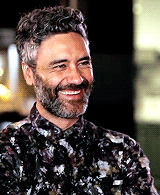
Hey it’s Robin again, I’m a 24-year-old non-binary (they/them & she/her) software engineer from England, if you wnat to know a little bit more about me I said some stuff here and you can always feel free to hit me up on here or on discord!
Have you seen EDWARD “EDDIE” TAWHAI around town? We’re trying to make sure they’re still in town, especially with everything that’s been happening lately. HE is a FORTY FOUR year old CIS MAN. currently residing in Perfection Valley, but they’re originally from WHANGAREI. they are best known for being the FIRE CHIEF, and i hear they’re pretty BRAVE yet also PESSIMISTIC at times; i hope they continue to survive.
Edward “Edd” Jonathan Tawhai (12th August 1974) was born in Whangarei a town in the Northland region of New Zealand to Theodore Tawhai, a man of Te Whānau-ā-Apanui Māori decent, and Morena Tawhai (née Penzik), a woman of Jewish decent. He grew up with his elder brother, Jack, and two younger siblings, Fredrick & Marie, all of whom were raised to value both cultures. He had somewhat of an uneventful if sheltered upbringing. As a teen the main thing he wanted to do was to see some of the rest of the country or even the world.
As a result Eddie appreciated the occasions when he and his family went on holiday, which they did fairly often. His favourite was a trip to Stockholm when he was nine, though he loved all of it. So it was hardly a surprise when he was finishing school that Edd wanted to go to another country to learn. Being from a fairly well-off family, and getting pretty excellent grades, Edd had the means to try to go to school abroad. His parents were severely worried about the notion but eventually relented. Eventually, came to live in America when he was 19, deciding to go to a university in New Mexico, studying Chemistry.
Though naturally quite homesick and anxious about this daunting change, Edd did quite successfully manage to make a good amount of friends. It was here that he also met his wife, Beatrice (or more usually Bea). He'd initially intended to go back to New Zealand after graduating, but after a few years of dating Bea his priorities changed somewhat. After about five years of dating, and a slightly clumsy proposal, the couple moved back to her hometown of Perfection Valley, Nevada, and Edd took up a job as a firefighter, while Bea worked with the local police. The pair got married in the autumn of that year.
Over the years, the couple have had four children: Dorian, Saffron, Andrew and Basil. Like his parents had, Edward made a point of trying to take the kids to see the world when they could, including his hometown of Whangarei so that they could know their many cousins at least fairly well, as well as have a connection to that side of the family. As time progressed, Eddie rose in the ranks of the local fire department until in the March of 2015 the former fire chief Kurt Black retired and Eddie took on the role and responsibility of being the local chief.
It was a fairly relaxing job for many years, however now as all of these bizarre creatures and events seem to be rolling through it's anything but, Eddie likes to joke that it's turned his hair grey. Mostly he just wants to help keep the population of Perfection Valley, a lot of whom he's known for most of his life, safe. However, circumstances seem to make that harder by the day.
1 note
·
View note
Text
Title: Kowhaiwhai
Medium: Acrylic
Artist: Tamararo Raihania
Iwi: Ngāti Porou, Te Whānau-ā-Apanui
Size: 1200mm x 600mm
Price: $1,200
#Kowhaiwhai#Tutahi#Tutahi Creative#digital design#design#arts#business#professional artists#artists and designers residing in queenstown#developers & startups#technology#tutahi creatives#designers residing in queenstown
0 notes